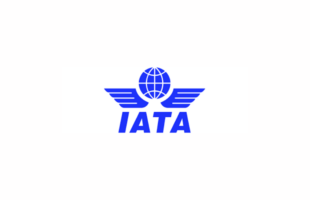The International Air Transport Association (IATA) released data for global air freight markets showing a strong increase in air cargo in July. Compared to July 2013, freight ton kilometres (FTKs) rose 5.8 per cent. This is an acceleration in growth from June when cargo demand grew at less than half that rate (2.4 per cent).
The strong growth mirrors positive developments in some key regional economies. After a slowdown at the start of the year, global business confidence and trade are showing signs of improvement again, especially in Asia-Pacific. Global air cargo volumes have now surpassed their previous July peak, in 2010, and look set to continue to increase. European air freight, however, grew just 1.8 per cent. This reflects the effects of the Russia-Ukraine crisis (including the impact of mounting economic sanctions), which is adding to economic weakness in the Eurozone.
“Overall, July saw growth accelerate. That’s good news and it reflects the continued strengthening of business confidence at a global level. But the air cargo industry is moving at two speeds with a sharp divide in regional performance. European carriers reported anemic growth of just 1.8 per cent while all other regions reported solid gains of 5 per cent or more on the previous year. In particular, the 7.1 per cent growth reported by airlines in Asia-Pacific is encouraging as it demonstrates a recovery in trade and a positive response to China’s economic stimulus measures,” said Tony Tyler, IATA’s director general and CEO.
July 2014 vs. July 2013 FTK Growth AFTK Growth FLF
International 6.4% 3.7% 48.0%
Domestic 1.9% -0.2% 29.3%
Total Market 5.8% 2.9% 44.4%
YTD 2014 vs. YTD 2013 FTK Growth AFTK Growth FLF
International 4.7% 3.9% 49.0%
Domestic 2.3% 1.7% 30.2%
Total Market 4.4% 3 .5% 45.2%
Regional analysis in detail
Asia-Pacific airlines showed their strongest rise in air cargo volumes since the start of 2013, increasing 7.1 per cent compared to a year ago. The fortunes of the region’s carriers are tied to the strength of major economies such as China, Japan and South Korea, which are expanding again after a slowdown at the start of the year. Capacity grew 4.0 per cent.
European carriers saw little improvement in cargo demand, expanding FTKs just 1.8 per cent compared to a year ago. The weakness of major economies such as France and Italy, along with the effect of EU sanctions on Russia, has dampened demand. Capacity expanded 4.4 per cent.
North American airlines grew their FTKs by 5.2 per cent. After weakness in the first quarter, trade volumes have rebounded and business growth trends look positive for the months ahead. Capacity fell 1.3 per cent.
Middle Eastern freight markets expanded 9.4 per cent. This strong performance came despite the impact of Ramadan. Airlines in the region are capturing growth opportunities by opening routes to fast-developing economies such as Mexico and Uganda. Capacity rose 7.8 per cent.
Latin American carriers grew FTKs by 7.6 per cent year-on-year. This encouraging performance could be the start of a pick-up in activity following months of weakness, particularly in Brazil. Capacity contracted 0.6 per cent.
African carriers’ FTKs grew 11.3 per cent. However, African freight volumes remain highly volatile, and given the slowdown in South Africa this year, it is too early to say that prolonged growth acceleration is underway. Capacity grew 4.5 per cent.





